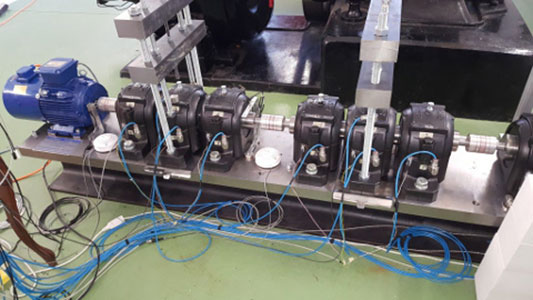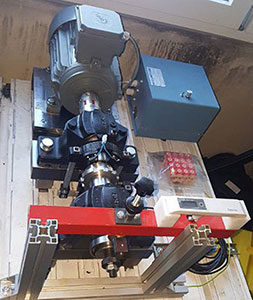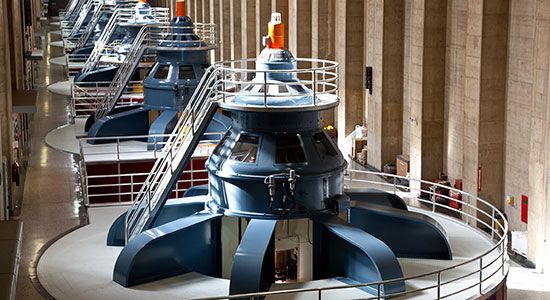We prevent machine failures
mechmine - monitors machine vibrations
Vibrations occur due to movements of mechanical parts. The causes can stem from imbalances, bearing defects, forces due to flow effects, wear and abrasion in gears, cracks and fractions in mounts, loose fittings, missing or broken oil films, material fatigue, assembly faults or alignment errors. The resulting defects cause unnecessary production loss and maybe severe damages.
Predicting upcoming defects is highly desirable. Employing state-of-the-art technologies like machine learning and deep neural networks requires huge amounts of data, in particular vibration data, and their health states. Mechmine follows a unique methodology to address this problem.
Test environment
Based on the aforementioned unique data generation and collection approach, we develop models to generate very realistic synthetic data in large numbers. Such models are superior to known models of bearing defects because they cover real world effects, which none of the published models do to such an extend. This enables machine learning methods to process reality-like raw vibration data, containing the maximum on information, as opposed to parameterised data (e.g. a RMS value every 10 minute).
 |
First, we built a large testbench with 8 popular industry-type bearings, e.g. SKF 6319/C3, where we stress the bearings until they develop defects and break. We monitor that process on an hourly basis. This enables Mechmine to learn how defects develop and how that process manifests itself in the vibration data. In summary, with this setup we collect data from bearing lifecycles under realistic conditions (in a power station). This is useful to prove, that one can infer from information learnt (health status and trend) from data within the same bearing type and across different bearing families. This assumption, which the whole community makes, has to our knowledge never been proven nor published. | |
 |
With our second testbench, we characterise bearing defects. We create bearing defects, for example via a scratch on the bearing inner ring, or use replaced defect bearings and measure their corresponding vibrations. We produce a 3D imprint (negative) of the defect by means of silicon rubber. This enables us to create a library of defects and their corresponding vibration pattern. In summary, with this testbench we collect data from bearing defects of various severities. This is useful to learn, how vibrations are affected by the depth, width, length and shape of a defect. | |
 |
The third testbed is dedicated to bearing currents, a growing concern in industry and affecting these days smaller machines too. Multiple asynchronous motors are connected to frequency converters and are running without load. Subject to the wiring, we can accelerate the development of bearing currents. Already after 3 to 6 months, we were able to observe a significant increase in vibration levels. In summary, here we investigate a special and growing problem in industry and develop improved detection algorithms and dedicated cheaper sensor systems. |



